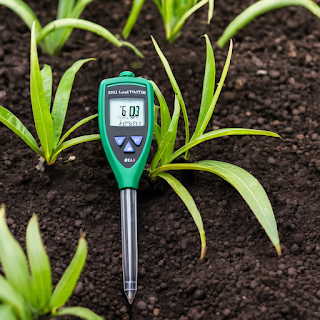Traditionally, growers applied agricultural lime uniformly or based on limited sampling, risking under-application in acidic hotspots. Fortunately, precision soil mapping now enables identification and targeted remediation of problematic zones before impacts appear.
Chief among emerging strategies, grid soil sampling coupled with GPS-guided lime spreading optimizes applications, raising pH levels precisely where needed. When carefully implemented, precision pH management holds promise maximizing yields sustainably through foundational soil health.
Soil pH Role for Plant
Soil pH acts as a master variable influencing nutrient availability, microbial communities and overall soil health. In acidic conditions below pH 6.0-6.5, solubilized aluminum can directly toxify roots while hydrogen ions competitively displace phosphorus, manganese, zinc and other micronutrients from cation exchange sites, rendering them plant-unavailable.
Additionally, acidic soils tend to harbor microbial communities with enzyme profiles less conducive to nitrogen mineralization and organic matter breakdown. Traditionally, lime was applied uniformly or based on limited sampling, risking under-application and yield penalties in problematic microzones. Precision techniques now enable targeted remediation before impacts appear.
Grid Soil Sampling Advantages
Grid soil sampling involves collecting small subsamples from a regular grid (5-20m spacing) across entire fields, analyzing the resulting composite samples to reveal subtle pH variations with unprecedented resolution. When coupled with yield maps and topographic data, grid sampling can:
- Locate microzones requiring lime below optimal pH thresholds before impacts appear.
- Identify problematic low-lying drainage-impaired areas often missed by traditional sampling.
- Prescribe variable-rate lime applications tailored to unique soil needs.
- Monitor pH fluctuations and track impacts of liming strategies over multiple years.
- Integrate with precision fertilizer/manure applications for balanced nutrient management.
When paired with GPS-guided variable-rate lime spreading, grid sampling holds promise maximizing yields sustainably through foundational soil health optimization.
Managing Soil pH Successfully
Several innovative growers partnering with land grant researchers have documented successes managing pH risks through precision techniques:
- A no-till corn/soy farm in Illinois boosted yields 5-15% across 80 ha by remediating two acidic microzones identified through grid sampling and precision lime application.
- A potato operation in Maine avoided $20,000 in losses by raising pH in a low-lying 1 ha zone located through grid sampling and variably limed.
- A silage corn farm in Wisconsin maintained stable yields for over a decade using grid sampling to differentially manage pH under a manure-based fertility program.
Notably, these farms optimized fertility naturally through precision pH management versus trial-and-error, demonstrating its potential to safeguard profits sustainably when integrated strategically on commercial scales.
Optimizing Precision pH Programs
To fully leverage benefits, precision pH programs should be carefully tailored to specific soil properties, challenges and farm goals:
- Establish baseline pH maps and periodically re-map to monitor liming strategy impacts over 3-5 years.
- Adjust grid density and composite sampling depths based on soil variability and intended management zone size.
- Consider elevation data to identify low-lying drainage-impaired areas requiring targeted attention.
- Pair with supplemental direct push pH probes to ground-truth grid samples as needed.
- Strategically time sampling around rainfall to capture variability and account for seasonality.
- Integrate variable-rate lime/fertilizer technologies to differentially manage mapped zones.
With careful optimization and monitoring, precision pH management shows strong potential to maximize yields naturally through foundational soil health optimization.
To fully harness the power of precision pH management, an integrated “systems” approach maximizes synergies:
- Incorporate aluminum-tolerant cover crops and forages in problematic zones to remediate through natural phytoextraction.
- Utilize strategic manure, compost or biosolids to raise pH while building organic matter over time.
- Improve subsurface drainage tailored to microtopography using precision techniques.
- Consider controlled traffic to minimize compaction in low-pH zones prone to structural degradation.
- Monitor irrigation water quality and adjust practices if contributing to acid loads.
A whole-farm perspective views pH management as an integrated process. With careful multi-year implementation, coordinated strategies can transform problem zones’ fertility potential naturally.
Conclusion
In closing, maintaining optimal soil pH represents a foundational yet often overlooked component of soil health and agricultural sustainability worldwide. Precision soil sampling coupled with GPS-guided variable-rate lime application shows strong potential to proactively identify and remediate problematic microzones before yield losses occur. Exciting opportunities also lie on the research frontiers, such as sensor-equipped platforms enabling ultra-high resolution pH mapping, statistical techniques streamlining data interpretation, and advances in precision agriculture supporting differential remediation.
Overall, an integrated “systems” approach valuing precision pH management lays the foundation for sustainable intensification through foundational soil health optimization well into the future.


Post a Comment